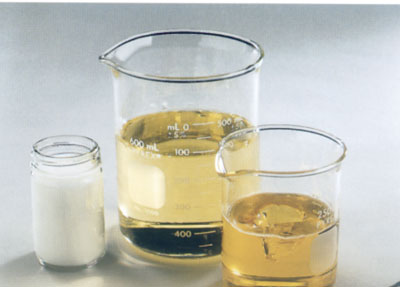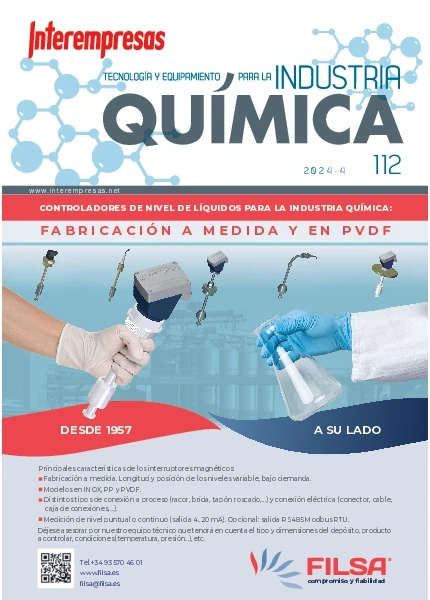Expected a fall of 10% of the production of the German chemical industry in 2009
July 29, 2009
Retail and wholesale sectors recorded a recovery and the service sector is maintained at the same levels, but the building suffers a setback, just like the chemical sector, the negative trend has continued in the first half of 2009, and practically in all subsectors. Production fell by 15% and the turnover fell 15.5% versus the first half of 2008 while the utilization of productive capacities contracted 72% approximately, to many plants reduce their activity by the weakness in global demand. In the first quarter of 2009, the prices of manufacturers deteriorated still more than in the previous quarter.
In this environment, it should be noted that the basic chemical product manufacturers have been most affected by adverse economic developments, while the impact on consumption (personal hygiene and detergents) chemicals has been less. The pharmaceutical sector, with a fall in production of 1.5% in the first quarter, has been the least affected. Agro-chemical products subsector remained stable.
On the other hand, in the first half of 2009 has been a clear increase in defaults, in number and volume, for the same period of last year. However, for the moment there has been major insolvencies.

What they should be fixed in particular companies that sell products in the chemical industry?
In addition to analyzing current balances and liquidity of customers plans, providers also should take into account the subsectors of its customers, as subsectors of basic chemicals and plastics have been very negatively affected by the crisis, while the pharmaceutical sub-sector is still enjoying good health. In addition, providers should ensure that you include a retention of title clause in their contracts.
Analysis of casino.in and suretyship in the short term expected that the German chemical sector will start to pick up slightly in the second half of 2009. For the year as a whole, is expected a reduction in the production of 10% and a fall of 12% of the turnover.
Given that the chemical sector provides 80% of its production to industrial customers, any improvement depends on the recovery of the main industries in general. After having enjoyed for years of a profitable business, most of the chemical companies have cut production, have introduced reduced hours and have postponed investments to cope with the crisis. When more becomes the general recovery expected, deeper will be the structural implications for this sector, in terms of increase in delay of payment, defaults and insolvencies.

Germany, current business environment
The German economy is based on the consumer private, driven by an inflation close to zero and incentives such as the programme of renewal of cars which has boosted the sale of vehicles. But the planned increase in unemployment to 4 million by the end of the year will hinder the consumption in the second half of 2009.
Although we have not yet experienced a widespread collapse of the credit in Germany, many businesses complain of lack of resources available for refinancing due to the reluctance of the banks. After throwing a Bad Bank (purchase of toxic assets) program to help financial institutions to recover from the credit crunch, the German Government is exerting increased pressure on banks to grant more loans and move customers rate base are at a very low level.
Thus, if in the first quarter of 2009, bankruptcies rose 10% annual, until the 7.717, for the whole of the year are expected around 35,000 insolvent companies. So far, banks have focused on programs of restructuring of companies in difficulties, but we anticipate that the banks clean up their portfolio of credits in the second half of 2009 and early next year. Many banking analysts anticipate a wave of depreciation in respect of loans to companies, which could negatively affect the rate of insolvency. Following the deterioration of the first quarter of 2009, the German economy may have bottomed out, and some indicators suggest that, at least, it will stabilise. However, still having uncertainty factors: future developments in the short term of consumption, unemployment, the availability of credit and external demand. The package of incentives of the Government will support and it will hold to certain sectors (e.g. construction) but these measures will not lead to a general economic recovery this year.
Forecast of defaults in Western Europe and United States
One of the most important factors that every company must know is the tendency for loan losses in their markets. The table of frequency planned defaults (FPI) is based on companies listed in these markets, and the probability of default in all sectors over the next year. In this context, the non-payment is defined as the failure of a scheduled payment, or the commencement of bankruptcy proceedings. The probability of non-payment is calculated taking into account three factors: the market value of the assets of a company, its volatility and its current capital structure. By way of guidance, the likelihood that a company between one hundred incurred in defaults is displayed as 1%.
Recent developments
The deterioration of the global economic environment has resulted in an increase in bankruptcies, which had been revealed, since mid-2007, an increase in the forecast of defaults. In May 2009, the planned frequency of defaults (FPI) half of the major Western economies fell again in relation to the previous month, but the pace of the decline has slowed down when compared with the months of March and April. United States has again suffered the most sharp in comparison with other markets monthly fall, while the United Kingdom has been a positive evolution, to level off in May. France, Germany and Netherlands have been more moderate declines. This widespread moderation can be explained by the fact that the majority of the national stock market indices have rebounded since the beginning of March: the general level of prices of securities has risen in most markets and volatility has been reduced. While this development is, in principle, positive, it is to see if it's a trend in the short term or if we are dealing with symptoms that is germinating an improvement in the long term. Despite the widespread decline, levels remain high, compared to recent years.
Immediate prospects for major markets and sectors
Monthly credit and suretyship, offers a snapshot updated to the minute on a number of key business sectors and export markets. At the moment, the analysts of credit and suretyship have access without restriction to all credit information and risk of 52 million companies, which improves the speed of decisions, quality and monitoring. Is it not only of financial statements, but information enriched with real time data provided to the system by members about the behavior in payments from its clients. All of this information feeds a system that monitors the evolution of the risks of failure to pay the insurance company perceives in each company. Our analysts have a specialized knowledge in global economy, as well as the industries that drive the economy. Their perspective on a number of key markets is available in each edition of the Market Monitor.









































